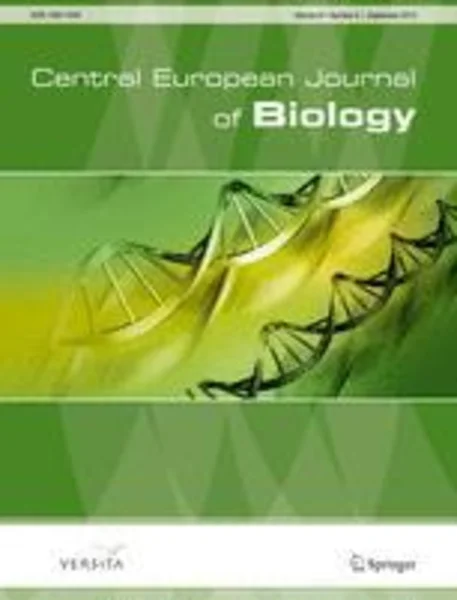-
in vitro antimicrobial activity of light-activated phthalocyanines
جزئیات بیشتر مقاله- تاریخ ارائه: 1392/07/24
- تاریخ انتشار در تی پی بین: 1392/07/24
- تعداد بازدید: 831
- تعداد پرسش و پاسخ ها: 0
- شماره تماس دبیرخانه رویداد: -
in vitro antimicrobial activity of light-activated phthalocyaninesbackground photodynamic antimicrobial therapy (pact) is proposed as a topical, non-invasive approach suitable for treatment of locally occurring infection. research of photosensitizers, (ps) as well as their development, is aimed at finding effective antimicrobial substances which would have a broad-spectrum potency. the aim of this paper is to evaluate the antimicrobial effect of phthalocyanine (pc) derivatives. methods fifteen different pc compounds were investigated. their photokilling activity was tested onstaphylococcus aureus, escherichia coli and candida albicans. after treating of microbial cells with pc at the concentrations: 1 mg/l, 2 mg/l, 4 mg/l, 8 mg/l for 30 minutes, the cultures were irradiated with low-power laser light at a wavelength of 670 nm (20 j/cm2, 40 j/cm2). the effectiveness of photoinactivation was evaluated based on the decrease in number (log10) of viable bacteria. results eight pc compounds tested showed antibacterial effects against s. aureus, but only four were effective against e. coli and two against c. albicans. the most effective photosensitizers were amphiphilic sulphonated zinc pc compounds [(3-diethylammonium)-propylsulphonamide citrate (pc3) and cationic tetramethylenepyridinium chloride of hydroxyaluminum pc (pc7)]. conclusions the most efficient phthalocyanines (pc3, pc7) cause a significant decrease in viable counts of all tested microbes.
مقالات جدیدترین رویدادها
-
استفاده از تحلیل اهمیت-عملکرد در ارائه الگوی مدیریت خلاقیت سازمانی و ارائه راهکار جهت بهبود
-
بررسی تاثیر ارزش وجوه نقد مازاد بر ساختار سرمایه شرکت های پذیرفته شده در بورس اوراق بهادار تهران
-
بررسی تأثیر سطح افشای ریسک بر قرارداد بدهی شرکت های پذیرفته شده در بورس اوراق بهادار تهران
-
بررسی تأثیر رتبه بندی اعتباری مبتنی بر مدل امتیاز بازار نوظهور بر نقد شوندگی سهام با تأکید بر خصوصی سازی شرکت ها
-
تأثیر آمیخته بازاریابی پوشاک ایرانی بر تصویر ذهنی مشتری پوشاک ایرانی (هاکوپیان)
-
تشخیص گونه های سنگی با استفاده از منطق فازی دریکی از مخازن نفتی ناهمگون ایران
-
ملقمه های تصویری ضعیف
-
بررسی تأثیر اکسیژن درمانی تکمیلی بر میزان بروز و شدت تهوع و استفراغ بعد از عمل جراحی سزارین به روش بی حسی نخاعی
-
ارائه مدلی تحلیلی برای تعیین مقادیر تنش و جابه جایی در سازه های بلند با سیستم قاب محیطی، هسته برشی و کمربند خرپایی
-
nurses' attitudes towards the ethical challenge of abortion in islamic countries: a review article
مقالات جدیدترین ژورنال ها
-
مدیریت و بررسی افسردگی دانش آموزان دختر مقطع متوسطه دوم در دروان کرونا در شهرستان دزفول
-
مدیریت و بررسی خرد سیاسی در اندیشه ی فردوسی در ادب ایران
-
واکاوی و مدیریت توصیفی قلمدان(جاکلیدی)ضریح در موزه آستان قدس رضوی
-
بررسی تاثیر خلاقیت، دانش و انگیزه کارکنان بر پیشنهادات نوآورانه کارکنان ( مورد مطالعه: هتل های 3 و 4 ستاره استان کرمان)
-
بررسی تاثیر کیفیت سیستم های اطلاعاتی بر تصمیم گیری موفق در شرکتهای تولیدی استان اصفهان (مورد مطالعه: مدیران شرکتهای تولیدی استان اصفهان)
-
بررسی رابطه بین محافظه کاری حسابداری و عملکرد شرکت در طول همه گیری covid-19 در شرکت های پذیرفته شده در بورس اوراق بهادار تهران
-
مدلی برای سنجش اثربخشی خدمات عمومی (آزمونی در بیمارستان های دولتی)
-
قرارداد گروهی به عنوان یکی از استثنائات اصل نسبی بودن قراردادها
-
بررسی موانع موثر(سقف شیشه ای) بر ارتقاء شغلی زنان در سطوح بالای مدیریتی در ادارات آموزش و پرورش استان مازندران در سال 1396
-
بررسی رابطه درگیری تحصیلی و خودکارآمدی تحصیلی با ویژگی های شخصیتی در دانش آموزان دوره دوم متوسطه شهر تهران




سوال خود را در مورد این مقاله مطرح نمایید :